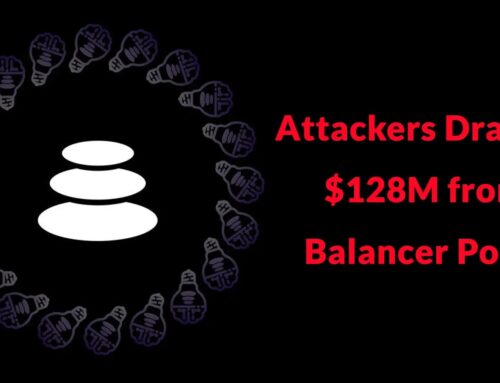
Malicious Chrome Extension Attacking Users to Steal Meta Login Credentials
The digital marketing landscape, once a beacon of innovation, is increasingly becoming a treacherous ground for unsuspecting professionals. A sophisticated threat has emerged, specifically preying on those managing Meta ad campaigns through a novel malicious Chrome extension. This isn’t just another phishing attempt; it’s a calculated attack leveraging powerful browser permissions to hijack user sessions and steal critical Meta login credentials. Understanding this threat, its modus operandi, and effective countermeasures is paramount for safeguarding your digital assets and maintaining operational integrity.
“Madgicx Plus”: A Deceptive Productivity Tool
The malicious Chrome extension, deceptively named “Madgicx Plus,” masquerades as a legitimate productivity and optimization tool for Meta (formerly Facebook) ad campaigns. Its allure lies in promising enhanced ad performance and streamlined workflow, a highly desirable prospect for digital marketers. However, beneath this veneer of utility lies a sophisticated mechanism designed for credential theft and session hijacking.
The distribution of “Madgicx Plus” is equally insidious. It’s not found on the official Chrome Web Store, which typically employs stringent security checks. Instead, it propagates through a network of meticulously crafted, deceptive websites. These sites are engineered to mimic legitimate AI-driven advertising platforms, further lending credibility to the malicious extension. Unwitting users, seeking innovative solutions for their ad strategies, are easily lured into downloading and installing this seemingly beneficial tool.
Browser Permissions: The Gateway to Compromise
The core of this attack vector lies in the abuse of Chrome’s powerful browser permissions. Once installed, “Madgicx Plus” exploits these elevated privileges to execute its malicious payload. While the original source does not specify a CVE directly related to this specific extension, the underlying vulnerability often stems from unsuspecting users granting broad permissions during installation, or from browser design allowing extensions to request excessive permissions without adequate scrutiny of their true intent.
The extension’s objective is clear: to hijack user sessions and pilfer Meta login credentials. This provides attackers with unfettered access to advertising accounts, potentially leading to financial espionage, unauthorized campaign modifications, data exfiltration, or even the propagation of further malware.
Modus Operandi: Session Hijacking and Credential Theft
The moment “Madgicx Plus” is installed and activated, it leverages its granted permissions to monitor and manipulate browser activities. This includes intercepting network requests, reading cookies, and potentially injecting scripts into legitimate Meta pages. By doing so, the attackers can:
- Hijack Sessions: Capitalize on active user sessions to operate within Meta’s ecosystem as if they were the legitimate user, bypassing multi-factor authentication (MFA) in some scenarios where session tokens are stolen.
- Steal Login Credentials: Capture usernames and passwords as users log into their Meta accounts, either through direct interception or by presenting fake login forms.
- Exfiltrate Data: Potentially access and download sensitive campaign data, audience information, and billing details.
Remediation Actions
Protecting yourself and your organization from such sophisticated threats requires a multi-layered security approach. Here are crucial remediation actions:
- Exercise Extreme Caution with Chrome Extensions: Only install extensions from the official Chrome Web Store. Always verify the developer’s legitimacy, review user ratings and reviews (looking for suspicious patterns), and carefully scrutinize the permissions an extension requests before installation. If an extension requests excessive permissions (e.g., “read and change all your data on all websites”), reconsider its necessity.
- Regularly Review Installed Extensions: Periodically audit your installed Chrome extensions. Remove any that are unfamiliar, unused, or raise suspicion. Navigate to
chrome://extensionsin your browser to manage them. - Enable and Enforce Multi-Factor Authentication (MFA): MFA significantly enhances account security. Even if credentials are stolen, MFA acts as a crucial barrier, preventing unauthorized access. For Meta accounts, use strong authenticator apps rather than SMS-based MFA, which can be vulnerable to SIM-swapping attacks.
- Phishing Awareness Training: Educate digital marketing teams and employees about the tactics used in malvertising and deceptive website schemes. Emphasize verifying URLs and avoiding suspicious downloads from unverified sources.
- Use Endpoint Detection and Response (EDR) Solutions: EDR tools can detect unusual process behavior, suspicious network connections, and file modifications indicative of malicious activity, including those initiated by rogue browser extensions.
- Keep Browsers and Operating Systems Updated: Ensure your Chrome browser and underlying operating system are always running the latest versions. Security updates often patch vulnerabilities that could be exploited by malicious extensions.
- Network Monitoring: Implement network monitoring to detect unusual outgoing connections or data exfiltration attempts from endpoints.
- Incident Response Plan: Have a well-defined incident response plan in place for credential theft and account compromise scenarios.
Tools for Detection and Mitigation
While prevention is key, having the right tools for detection and mitigation is equally important.
| Tool Name | Purpose | Link |
|---|---|---|
| Chrome Extension Developer Mode | Manual review of extension source code (for advanced users) | chrome://extensions |
| Virustotal | File and URL analysis for malware; can be used to scan suspicious extension files (.crx) |
https://www.virustotal.com/ |
| OWASP ZAP | Web application security scanner; can identify vulnerabilities in web pages that extensions might interact with | https://www.zaproxy.org/ |
| Any.Run | Interactive malware analysis sandbox; can be used to observe extension behavior in a controlled environment | https://any.run/ |
| Endpoint Detection and Response (EDR) Solutions (e.g., CrowdStrike, SentinelOne) | Real-time threat detection and response on endpoints | (Vendor-specific) |
Conclusion
The “Madgicx Plus” campaign is a stark reminder that cybercriminals are constantly evolving their tactics, targeting specialized professional groups with highly tailored threats. For digital marketers and anyone managing sensitive accounts online, vigilance is non-negotiable. Understanding the mechanisms of deceit, scrutinizing software installations, and rigorously applying security best practices are your strongest defenses. Stay informed, stay cautious, and protect your digital footprint from these evolving threats.





